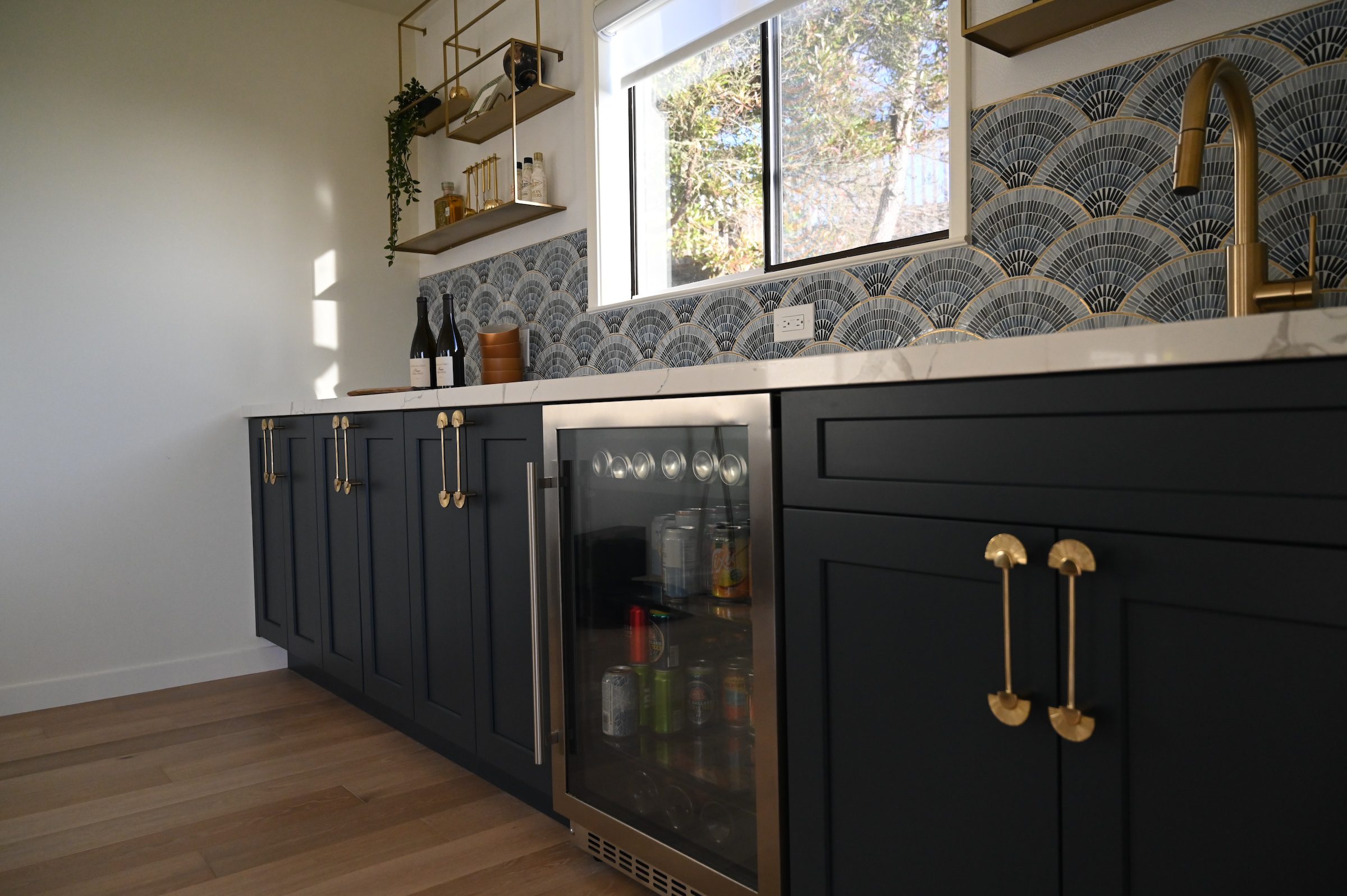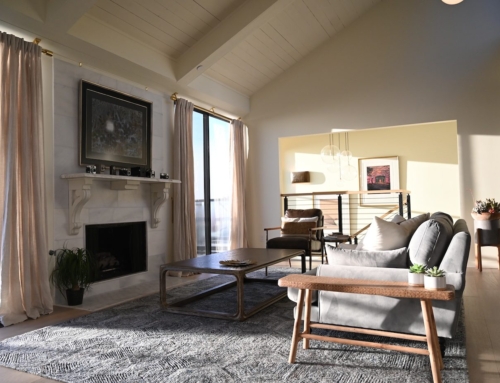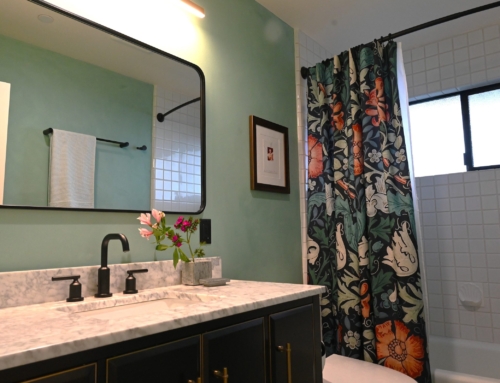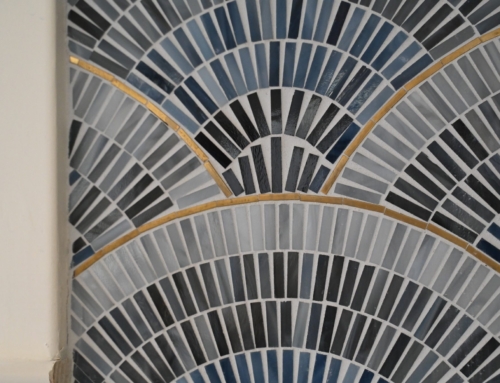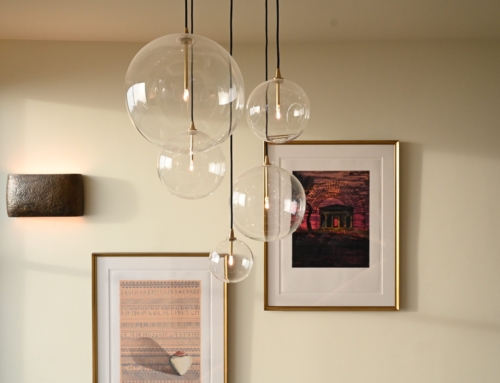In every kitchen we design, we come up against this question of how high the backsplash should extend above the counter top. As with everything, it depends. I talk with my clients about how they want to care for the tile, their budget, their own sensibilities as far as how busy they want the splash to look. All of these have a factor in the materials selection, and the install details.
I highly recommend coming up above the countertop at least 6”. You can do a “lip” of 2”, you can do 4”, which is common when running the countertop onto the wall as the splash, but I think most situation benefit from a chunkier splash with real presence, at 6”.This allows the eye to flow up the wall enough to avoid a feeling of “unfinishedness”.
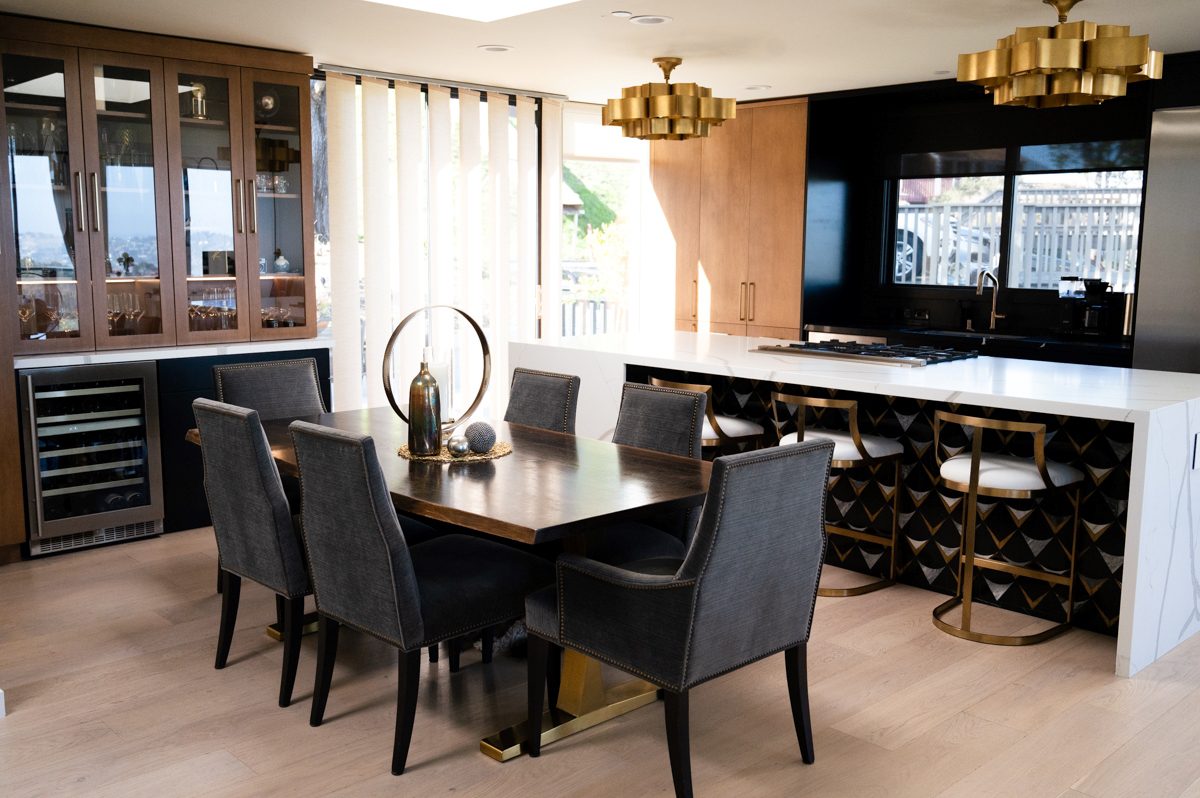
Past that little note, there are so many ways to run the tile, but here are our top recommendations for each option:
If you have upper cabinets, run the tile to the bottom of the cabinets. If the space opens up, maybe where there is a gap between a cabinet and a window, for instance, then finish the tile off with a Schluter strip (or other brand; these are very low profile metal strips in a bunch of finish options, to finish the exposed edge of your tile).
If you want a chunkier trim tile, such as a marble to match a stone tile, then run that trim into the cabinets, and along the window edge. So, tile up to cabinets, trim in line with bottom of cabinets.
If you have upper shelves, we love to run the tile about 4” above the first shelf (counting the first shelf as the one nearest the counter top), and again finish it off with a Schluter Strip. It makes a nice elongated integration into the transition, rather than becoming too “stripey” between counter top, splash, and shelves.
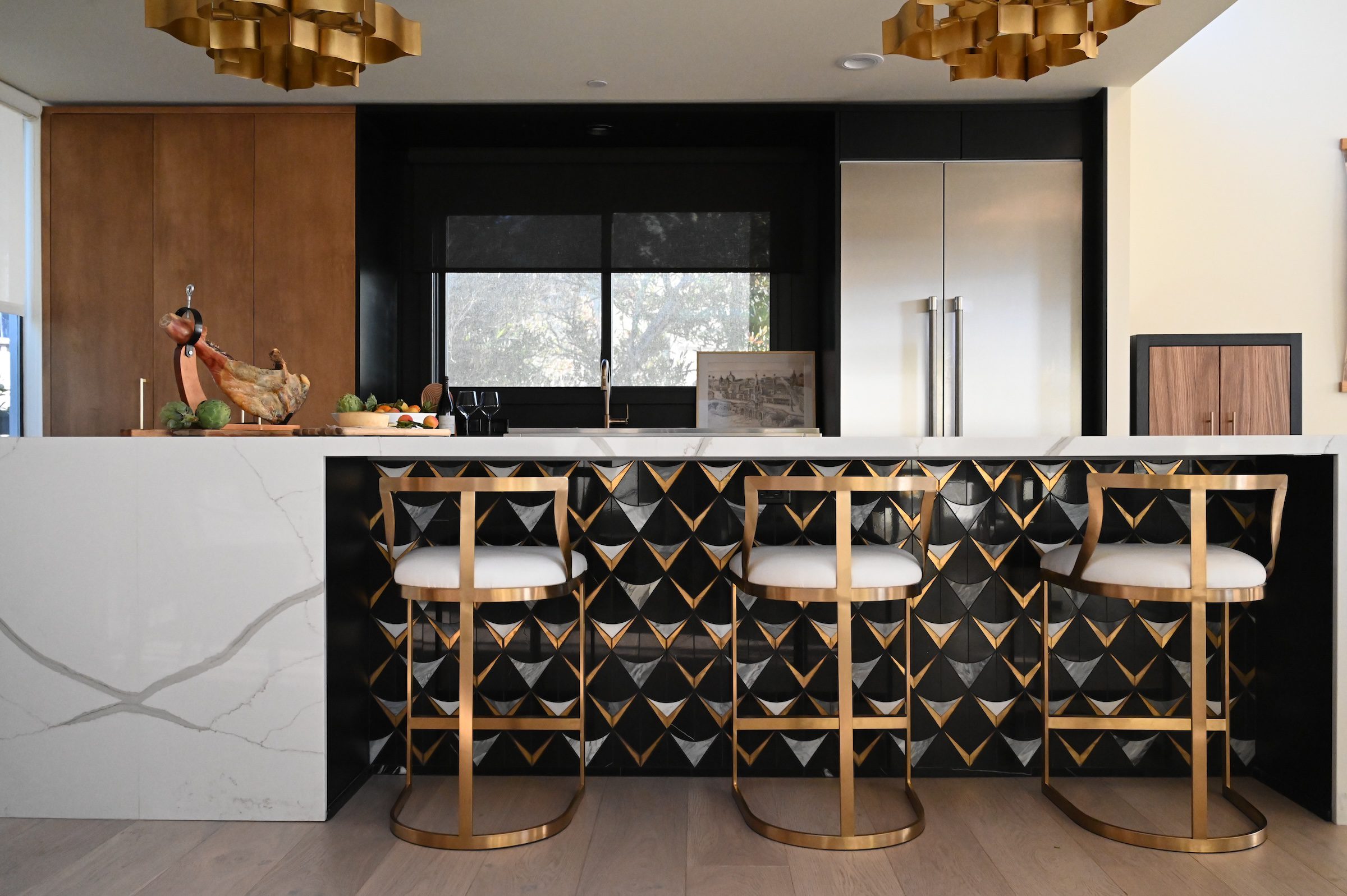
The last option is to run the tile all the way to the ceiling. This is a great look to keep the space feeling finished, without worrying about trim tile, if it makes the window seem shorter, what are the install details, etc. This adds simplicity, and often a bit more of a sterile feeling to the space. This is the opposite of what you may instinctually believe, since more tile seems more busy, but with the continued elevations, our eye has less to land on and comprehend between transitions, and therefore reads it as a less busy application.
Of course, there are factors to consider beyond this, such as stone vs ceramic, flexibility in remodel, cleanability, cost, etc. If you find yourself with more questions, and still feeling stuck, please reach out to me via our contact form, and check out the options on the Overcome the Overwhelm page. That may be a great fit to keep you moving confidently forward towards a successful project!



